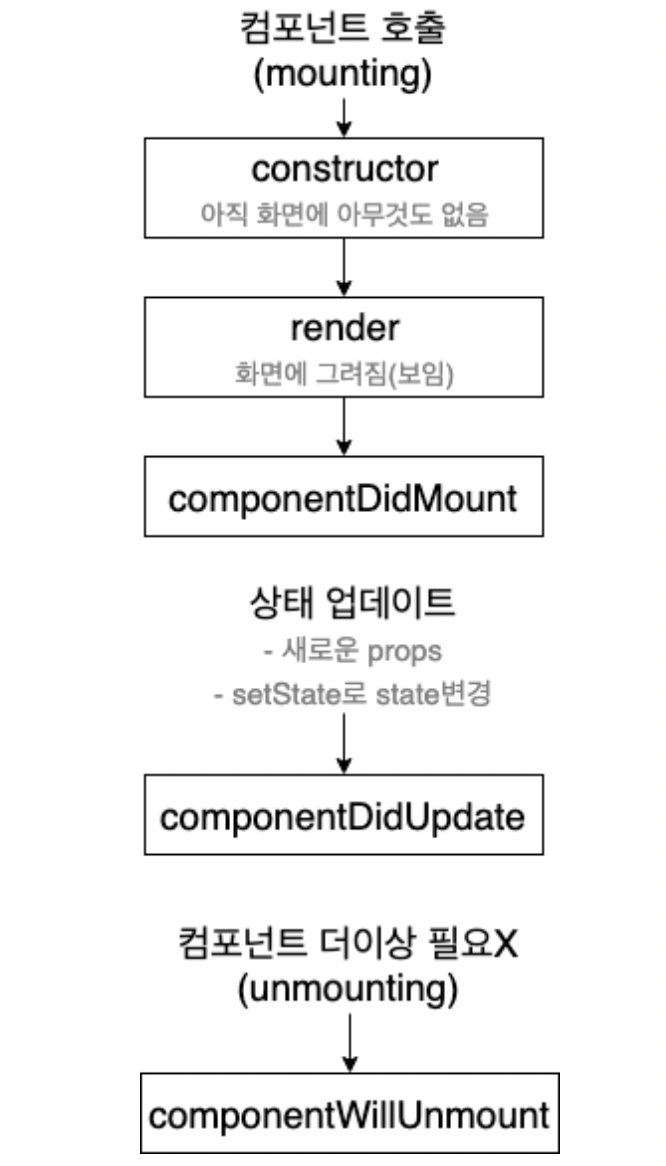
render,componentDidMount,componentDidUpdate, componentWillUnmount 와 같은 함수들은 React.Component 클래스에서 제공하는 것들이다.
즉, class를 사용해 컴포넌트를 생성할 때 사용되는 함수들이다.
예제를 통한 이해
class Clock extends React.Component {
constructor() {
super();
this.state = {
date: new Date()
};
}
componentDidMount() {
this.timerID = setInterval(
() => this.tick(),
1000
);
}
componentWillUnmount() {
clearInterval(this.timerID);
}
tick() {
this.setState({
date: new Date()
});
}
render() {
return (
<div>
<h1>Hello, world!</h1>
<h2>It is {this.state.date.toLocaleTimeString()}.</h2>
</div>
);
}
}
ReactDOM.render(
<Clock />,
document.getElementById('root')
);-
ReactDOM.render()의 첫 번째 인자에서 Clock을 넘겨줄 때, React는 Clock 컴포넌트의constructor를 실행시킨다. -
constructor내에 있는super()는 extends한React.Component의 메서드들을 사용하기 위해 반드시 붙여준다. 또한this.state = {}에서 Clock의 초기상태 (여기서는 new Date)를 설정해 줄 수 있다. -
이 후
render()메서드가 호출된다. -
render()메서드 내에 return이 실행되면,componentDidMount()메서드가 호출된다. -
component내 tick 함수가 매초 실행될 수 있도록 timer 추가
-
매초 브라우저가 tick 메서드를 호출하면서
this.state.date값이 변화. -
이 때,
componentDidUpdate()를 선언해주면 state가 변경될 때 호출되지만, 정의하지 않았으므로 rander()가 다시 호출되면서 바뀐 부분이 변경. -
DOM에서 Clock 컴포넌트가 삭제될 때
componentWillUnmount가 호출되고 timer도 함께 멈추게 된다.

